Florian Tilquin
On the Accuracy of Phase Extraction from a Known-Frequency Noisy Sinusoidal Signal
Feb 07, 2024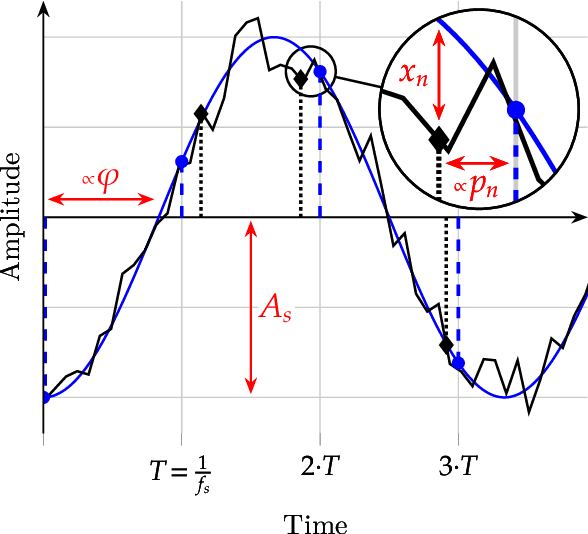
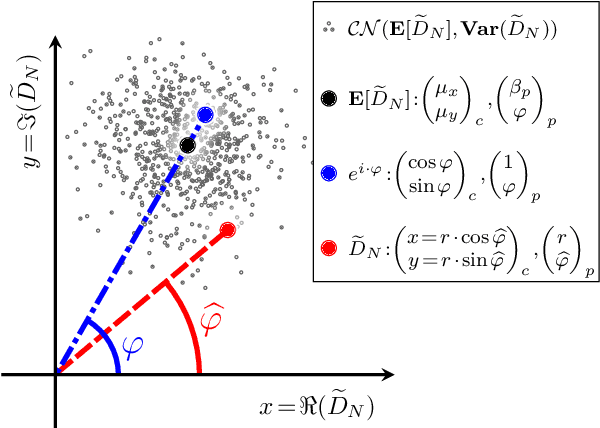
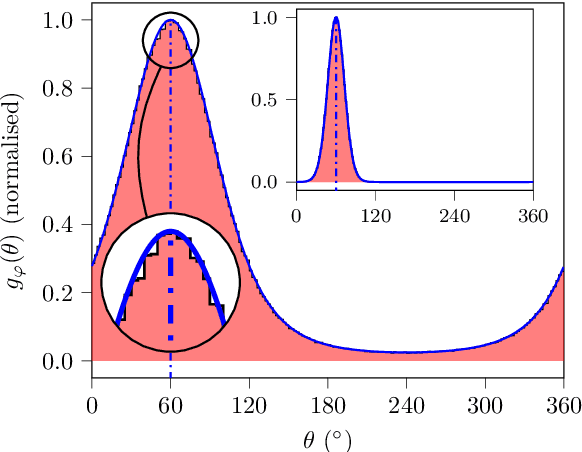
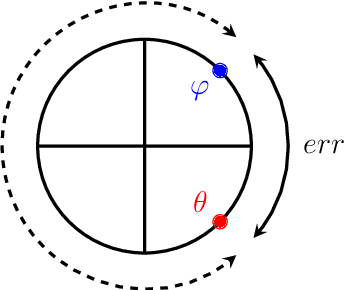
Abstract:Accurate phase extraction from sinusoidal signals is a crucial task in various signal processing applications. While prior research predominantly addresses the case of asynchronous sampling with unknown signal frequency, this study focuses on the more specific situation where synchronous sampling is possible, and the signal's frequency is known. In this framework, a comprehensive analysis of phase estimation accuracy in the presence of both additive and phase noises is presented. A closed-form expression for the asymptotic Probability Density Function (PDF) of the resulting phase estimator is presented, and validated by simulations that depict Root Mean Square Error (RMSE) trends in different noise scenarios. The latter estimator is asymptotically efficient, exhibiting fast convergence towards its Cram\'er-Rao Lower Bound (CRLB). Three distinct RMSE behaviours were identified depending on the Signal to Noise Ratio (SNR), sample count (N), and noise level: (i) saturation towards a random guess at low SNR values, (ii) linear decreasing relationship with the square roots of N and SNR at moderate noise levels, and (iii) saturation at high SNR towards a noise floor function of the phase noise level. By quantifying the impact of sample count, additive noise, and phase noise on phase estimation accuracy, this work provides valuable insights for designing systems that require precise phase extraction, such as phase-based fluorescence assays or system identification.
Unsupervised learning-based long-term superpixel tracking
Feb 25, 2019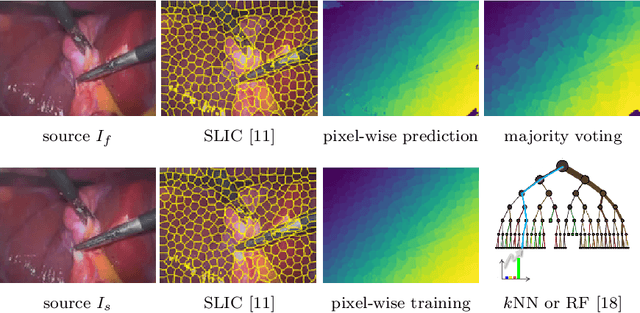
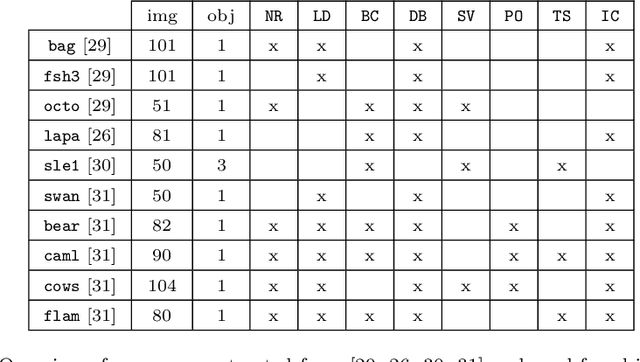
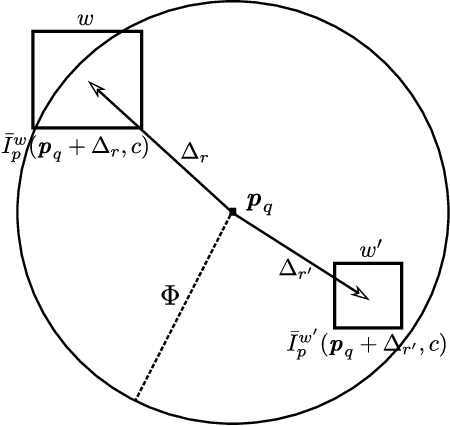
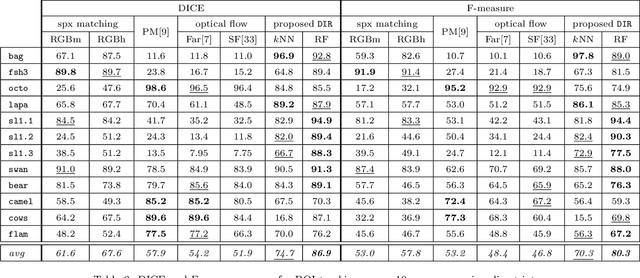
Abstract:Finding correspondences between structural entities decomposing images is of high interest for computer vision applications. In particular, we analyze how to accurately track superpixels - visual primitives generated by aggregating adjacent pixels sharing similar characteristics - over extended time periods relying on unsupervised learning and temporal integration. A two-step video processing pipeline dedicated to long-term superpixel tracking is proposed. First, unsupervised learning-based superpixel matching provides correspondences between consecutive and distant frames using new context-rich features extended from greyscale to multi-channel and forward-backward consistency contraints. Resulting elementary matches are then combined along multi-step paths running through the whole sequence with various inter-frame distances. This produces a large set of candidate long-term superpixel pairings upon which majority voting is performed. Video object tracking experiments demonstrate the accuracy of our elementary estimator against state-of-the-art methods and proves the ability of multi-step integration to provide accurate long-term superpixel matches compared to usual direct and sequential integration.
 Add to Chrome
Add to Chrome Add to Firefox
Add to Firefox Add to Edge
Add to Edge